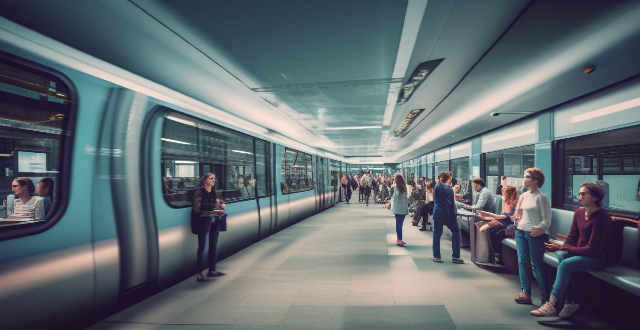The text focuses on improving public transportation accessibility for people with disabilities. It suggests several ideas such as low floor buses and trains, tactile paving, audio and visual signals, wheelchair lifts and ramps, braille signage, accessible websites and mobile apps, and training for public transportation staff. The goal is to make it easier and safer for people with disabilities to use public transportation.

Improving Public Transportation Accessibility for People with Disabilities
Public transportation accessibility for people with disabilities is a critical issue that needs to be addressed. Here are some innovative ideas for improving public transportation accessibility for people with disabilities:
1. Low Floor Buses and Trains
Low floor buses and trains can significantly improve accessibility for people with disabilities. These vehicles have a low floor height, which makes it easier for wheelchair users to enter and exit the vehicle. Additionally, low floor buses and trains have wider doors, which provide more space for wheelchair users to maneuver.
2. Tactile Paving
Tactile paving is a type of pavement that uses different textures and patterns to help visually impaired people navigate their surroundings. By using tactile paving on sidewalks and at bus stops, people with visual impairments can easily find their way to and from public transportation.
3. Audio and Visual Signals
Audio and visual signals can help people with hearing impairments and visual impairments use public transportation safely. For example, audio signals can be used to alert passengers when the bus is approaching or leaving a stop. Visual signals, such as flashing lights, can be used to indicate when it is safe to cross the street.
4. Wheelchair Lifts and Ramps
Wheelchair lifts and ramps can make it easier for wheelchair users to access public transportation. These devices can be installed on buses, trains, and subways to allow wheelchair users to enter and exit the vehicle without assistance. Additionally, wheelchair lifts and ramps can be installed at bus stops and train stations to make it easier for wheelchair users to get to and from the platform.
5. Braille Signage
Braille signage can help visually impaired people navigate public transportation systems. By using braille signage at bus stops, train stations, and on public transportation vehicles, visually impaired people can easily find their way around. Additionally, braille signage can be used in conjunction with audio signals to provide a more comprehensive navigation system for visually impaired people.
6. Accessible Websites and Mobile Apps
Accessible websites and mobile apps can help people with disabilities plan their trips and find the most accessible routes. By providing information about wheelchair accessibility, audio and visual signals, and other accessibility features, these tools can help people with disabilities use public transportation more easily and safely.
7. Training for Public Transportation Staff
Training for public transportation staff can help ensure that people with disabilities receive the support they need to use public transportation safely and comfortably. This training should cover topics such as how to assist wheelchair users, how to communicate with people who have hearing or visual impairments, and how to use assistive technology.